7 Chemical Free DIY Face Masks for All Skin Types

When it comes to having beautiful skin, you only need to look as far as your kitchen.
While there are some good products out there, it can be hard to know what you’re getting. Many store-bought face masks can contain carcinogenic chemicals and additives — such as fragrances, parabens, and phthalates — that can ultimately do more harm to your skin than good. These ingredients also have the potential to clog pores, which may leave you more prone to breakouts and other skin problems. By making your own face masks at home, you can avoid unnecessary or even harmful ingredients..
We’ve rounded up 7 of the best DIY face mask recipes you can make from ordinary kitchen ingredients for anything your skin is going through — whether it’s dry, oily, breaking out, or simply needing a little extra glow.
These chemical-free face mask recipes are very basic, and most contain only two or three ingredients. However, you can customize them any way you’d like with your favorite natural skin care ingredients, such as essential oils or spices. You should be able to find all of these ingredients at your local health food store (and if not, you can order them online).
Disclaimer: Although these face masks only contain 100% natural ingredients, everyone’s skin reacts differently. Be sure to do a small patch test before applying the entire mask to your skin.
7 Chemical-Free DIY Face Mask Recipes

1. DIY Face Mask for Acne-Prone Skin
Pimples are caused by a mixture of bacteria, sebum (oil), and dead skin cells that clog pores (1). Therefore, the best ingredients to use on acne-prone skin will have antibacterial properties and gently exfoliate to get rid of dead skin cells.
Honey makes one of the best DIY face masks to combat acne because it’s a natural hydroscopic, which means it helps draw moisture out from the environments where bacteria can accumulate (2). This also can help tighten your pores and keep them clean.
Manuka honey, in particular, is rich in the antibacterial compound methylglyoxal (MG), which gives it stronger antibacterial properties than regular honey (3). For this reason, some people even use Manuka honey as a natural acne spot treatment.
If you’ve had a recent breakout that’s left you with swelling or redness, Manuka honey also has natural anti-inflammatory properties that can help soothe your skin and speed up wound healing (4). A thin layer of Manuka honey makes a great face mask on its own, but we’ve added a few drops of tea tree essential oil to boost the antibacterial potency (5).
Antibacterial Manuka Honey Mask
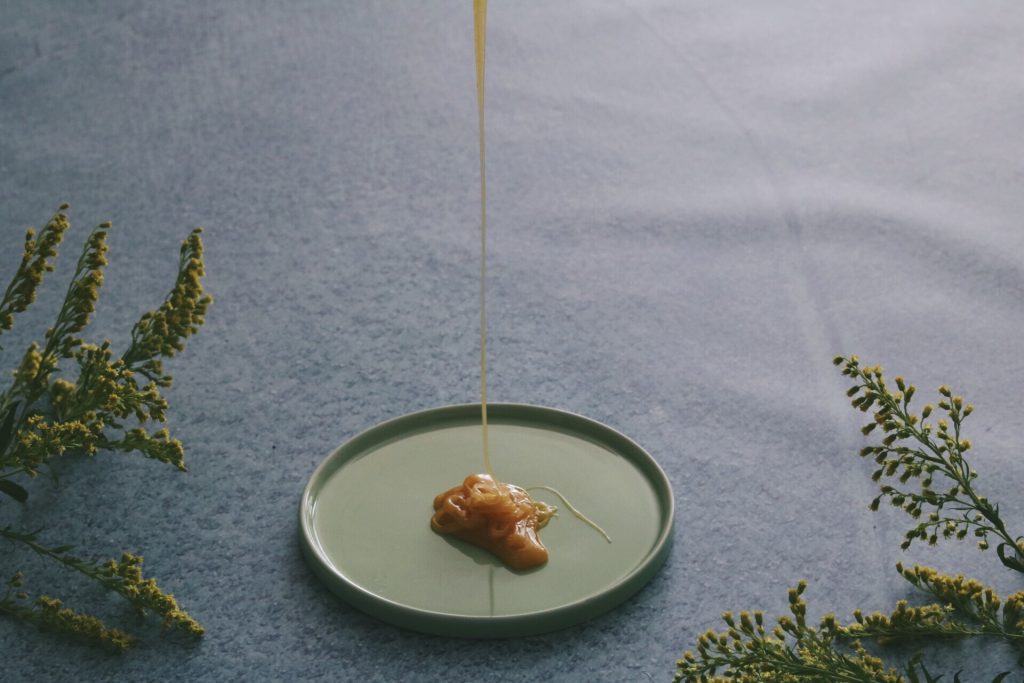
Ingredients
- 1 tablespoon Manuka honey (more or less, depending on how much is needed to cover your face or the affected areas)
- 1-2 drops organic pure tea tree essential oil
Instructions
- Combine honey and tea tree oil in a small bowl.
- Apply mixture to a thoroughly cleansed and slightly dampened face (this helps make the application easier).
- Leave on for 15 minutes, then rinse.
- Follow with toner and moisturizer.
Notes
When using pure tea tree essential oil in your skin care routine, use it sparingly and pay attention to how your skin reacts. Tea tree has natural drying properties, which can cause your skin to produce more oil to compensate if overused. This could further clog pores. For this reason, you may want to follow up with a moisturizer after using tea tree.
2. DIY Face Mask for Blackheads
If blackheads are the bane of your existence, you’re not alone. Like pimples, blackheads can be tough to get rid of and are caused by excess oil production, which combines with dead skin cells in your pores.
When air comes in contact with this bacteria and dead cell mixture (yuck, we know), the oil oxidizes, which is what turns the “mixture” black (1). This gunk also stretches your pores and makes them look larger.
Activated charcoal is commonly used in hospitals to treat poisoning and drug overdoses. This is because it has the ability to bind to toxins and chemicals to safely eliminate them, which prevents them from being absorbed in your blood stream (6). When it comes to the skin, it’s suggested that activated charcoal has a similar action — it traps and removes the dirt and bacteria on the skin’s surface that clogs pores and cause blackheads.
In this face mask recipe, we’ve combined activated charcoal with bentonite clay, which is another natural ingredient that may help with pore extraction.
Activated Charcoal Mask
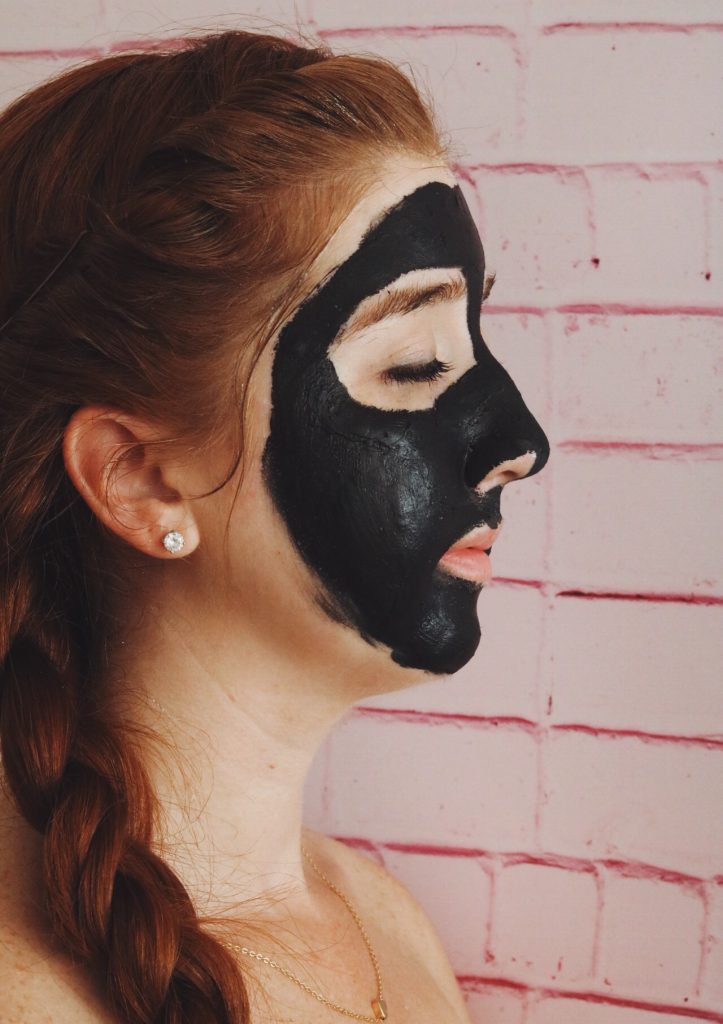
Ingredients
- 1 teaspoon activated charcoal powder
- 1 teaspoon bentonite clay
- 1 teaspoon water (or more, as needed)
Instructions
- Combine charcoal and bentonite clay in a bowl and add water. Mix until a paste forms.
- Apply to a thoroughly cleansed face and allow to sit for 10 minutes.
- Rinse off and follow with your regular skincare routine.
Notes
The activated charcoal you apply to your skin should always be from a natural source, such as coconut shells. Activated charcoal stains, so be careful to avoid mixing and applying on bare countertops.
3. DIY Face Mask for Glowing Skin
Sometimes you just need a little “pick-me-up” to enhance your skin’s natural glow, and turmeric can help with that.
Turmeric is packed with antioxidants and has natural anti-inflammatory properties, which is why it’s known as one of the top foods to eat for healthy skin. Studies suggest it’s also helpful for improving a long list of skin conditions when eaten and applied topically, such as dermatitis, acne, photoaging, and vitiligo (7).
This face mask recipe for glowing skin also uses organic yogurt, which may improve skin softness from the lactic acid (8).
Turmeric Yogurt Face Mask
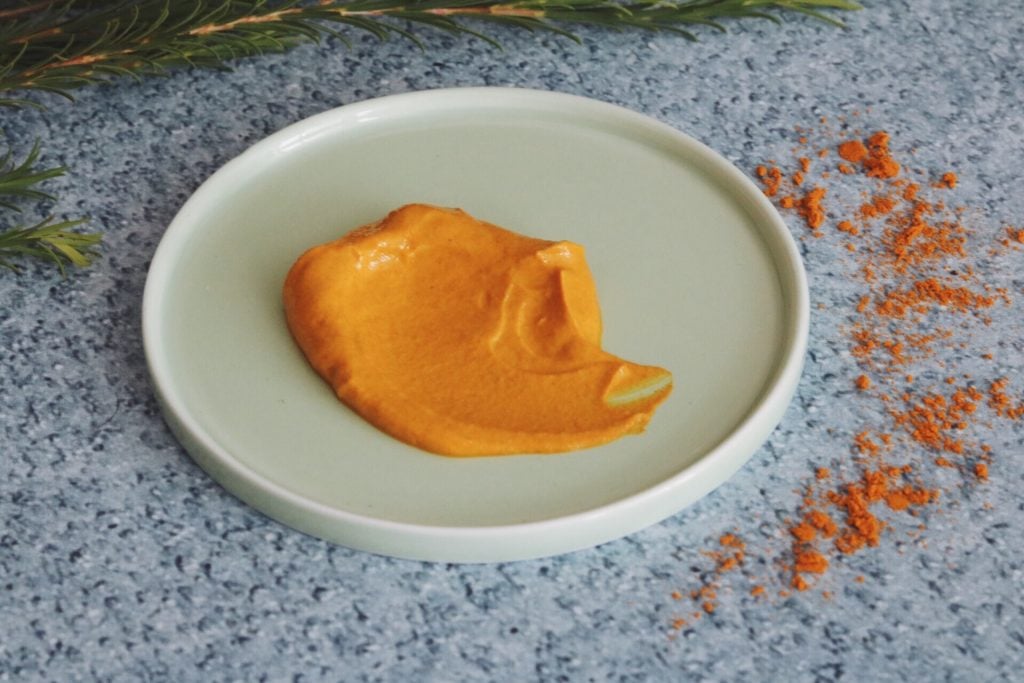
Warning: Don’t do this one first thing in the morning, before work, or an important event! Turmeric has the tendency to stain, especially if left on for too long.
Ingredients
- ½ teaspoon turmeric powder
- ½ teaspoon plain organic yogurt
- ½ teaspoon Manuka honey (optional)
Instructions
- Combine turmeric and yogurt in a small bowl, then add honey, if using.
- Apply to clean skin.
- Leave on for 10 minutes, then rinse and follow with your regular skincare routine.
Notes
With it’s bright orange pigment, turmeric can stain if it’s left on the skin for too long, so be sure to set a timer for this one! If the turmeric does happen to tint your skin slightly orange, don’t worry — it will wash off with a natural cleanser, water, and some scrubbing. (This is when doing a patch test beforehand can come in handy.)
4. DIY Face Masks for Acne Scars
As if it’s not painful enough to suffer from acne, breakouts can leave behind unsightly scars.
Some foods, such as apple cider vinegar, contain organic acids that can help fade acne scars over time. Apple cider vinegar contains lactic acid, which is shown to gently exfoliate the skin to improve texture, appearance, and skin tone (9).
As an added bonus, studies show that succinic acid can halt the growth of P.acnes on the skin — a bacteria that grows deep within clogged hair follicles and forms pimples (10). In other words, apple cider vinegar is an all-around beneficial ingredient to have in your wellness routine, whether that’s as a face mask, facial toner, or in your favorite recipes.
Apple Cider Vinegar and Honey Face Mask
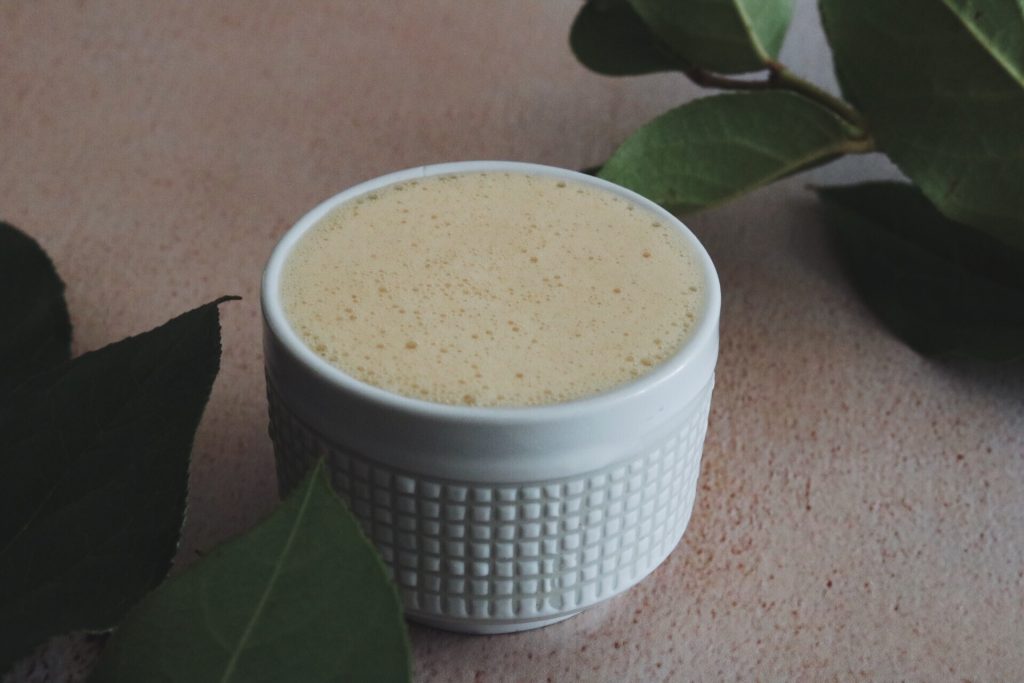
Recipe modified from Remedies for Me.
Ingredients
- 1 teaspoon organic apple cider vinegar
- 2 teaspoons raw honey or Manuka honey
- 1 teaspoon aluminum-free baking soda
Instructions
- Combine all ingredients in a small bowl until they form a paste.
- Apply to your face and leave on for 10-15 minutes.
- Rinse off with warm water. (You can use a washcloth for extra exfoliating effects.)
Notes
When choosing apple cider vinegar, be sure it still contains the mother — a cloudy “clump” of beneficial bacteria that usually floats near the top of the bottle. This is what gives apple cider vinegar all of it’s amazing health benefits. Bragg’s Organic Apple Cider Vinegar contains the mother, and can be found at most supermarkets or purchased online for under $7.
5. DIY Face Mask for Redness and Inflammation
Whether you’ve spent too much time in the sun, or your skin’s suffering from a rash or breakout, aloe vera can help. That’s because it has active compounds that can work quickly to soothe irritated skin, as well as moisturize, stimulate skin growth, and repair all at the same time (11).
Salicylic acid is one of the compounds responsible for aloe vera’s powerful anti-inflammatory properties, which is also a natural antibacterial commonly added to over-the-counter skin care products for getting of acne (12).
For best results, we recommend picking up an aloe vera plant at your local nursery so you can use pure, fresh aloe vera gel from the leaves.
Soothing Anti-Inflammatory Aloe Vera Face Mask
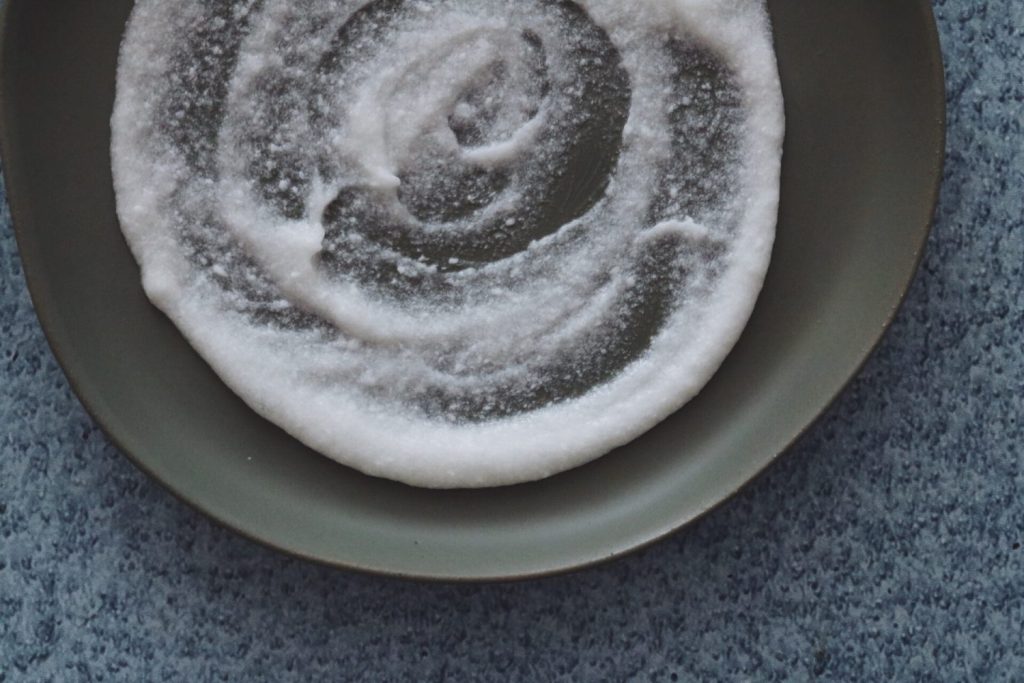
Ingredients
- 1 tablespoon aloe vera gel
- 1 teaspoon plain organic yogurt
Instructions
- Combine aloe vera gel and yogurt in a small bowl.
- Apply to a thoroughly cleansed skin.
- Leave on for 15-20 minutes, then rinse.
6. DIY Face Mask for Oily Skin
Although oily skin can be caused by a number of factors — including some of which you can’t control, like genetics — you may actually benefit most from using natural ingredients that keep your skin moisturized. Although this sounds counterintuitive, certain products (such as those formulated with alcohol) can dry out your skin, which tells your skin to produce more oil to compensate (13).
This face mask for oily skin uses one simple ingredient: oats, which help absorb oil, gently exfoliate, and moisturize at the same time.
The Easiest Oatmeal Face Mask
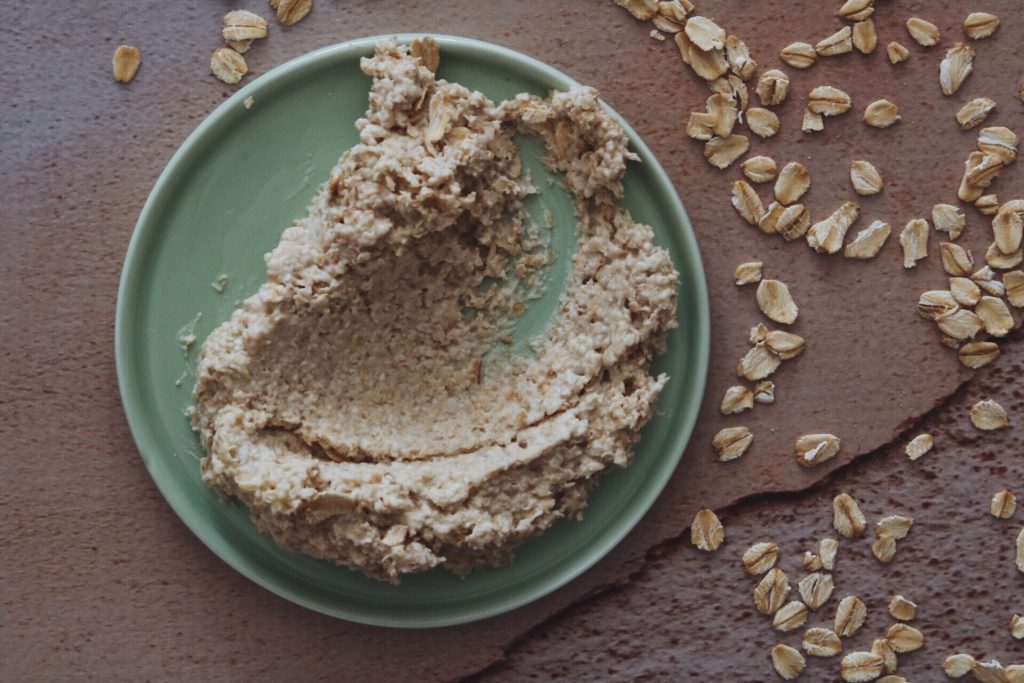
Ingredients
- 2 tablespoons ground oatmeal*
- 2 teaspoons warm water
* You can grind whole rolled oats in a coffee bean grinder to form a powder.
Instructions
- Combine ground rolled oats with water.
- Apply to clean skin.
- Leave mask on for 15-20 minutes and rinse off.
Notes
Be sure to use ground oats so they can properly absorb the oil from your skin.
7. DIY Face Mask for Dry Skin
Dry skin can be caused by so many factors, from hormonal fluctuations and prescription medications to changes in the weather. If your skin is feeling a little thirsty, the best nutrients to hydrate it are fatty acids, which are naturally moisturizing (13).
Hydrating Avocado Face Mask
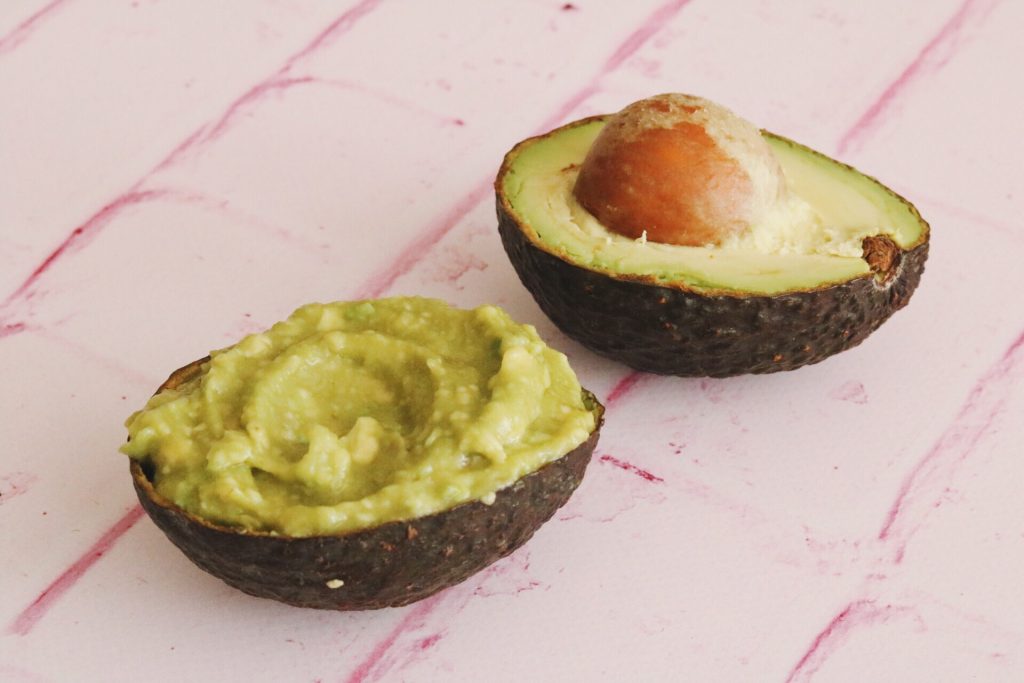
Ingredients
- ½ ripe avocado, pitted
- 1 tablespoon raw honey or Manuka honey
Instructions
- In a small bowl, mash the avocado with the back of a spoon or fork until it forms a smooth texture (the fewer lumps, the better).
- Stir in honey.
- Apply to clean skin and let sit for 15-20 minutes.
- Rinse and follow with regular skin care routine.
Notes
This face mask is a little messy, so it’s definitely one you’ll want to use when you can lay down and relax. You’ll also want to change into something you don’t mind getting a little mucky.
Don’t Forget: Good Skin Comes from Within
While these DIY chemical-free face mask recipes are helpful for improving the appearance of skin in the short-term, it’s also important to consider that beautiful skin comes from within.
As you use DIY face masks to keep your skin healthy on the outside, the biggest key to improving your skin is to eat plenty of whole, unprocessed foods and avoid foods that can wreak havoc on your gut, such as refined sugar,carbohydrates, alcohol, and heavily processed oils.
If you suffer from frequent skin flare ups, you also may want to consider looking into conditions such as gut dysbiosis, leaky gut syndrome, and candida as potential underlying causes, as the gut and skin have a direct relationship (called the gut skin axis)(14).

